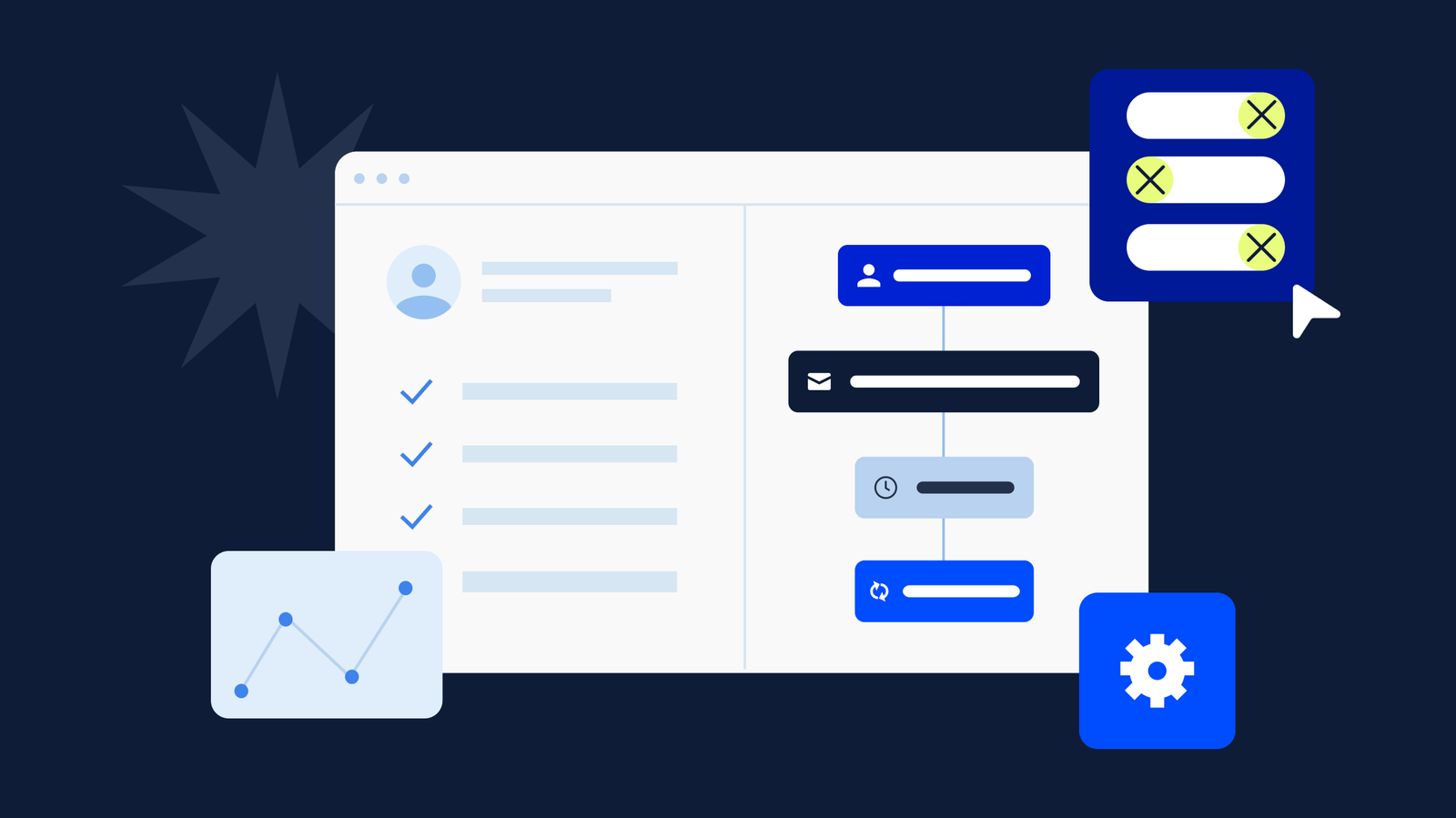Content creators, marketers, bloggers, podcasters, social media managers, and other flavors of creators are always thinking about how to best manage the relationships they have with their clients, customers, sponsors, partners, and collaborators.
If you’re a creator yourself, have you thought about how to do this as your business scales? For content creators with smaller teams or even working as a solopreneur, relationship management is a huge lever to pull as your content grows in popularity.
This is where CRM (customer relationship management) software comes into play.
What is a CRM?
CRM software manages interactions with current and potential customers. It typically helps with organizing and automating sales, marketing, customer service, and other related processes to improve customer relationships, streamline operations, and increase profitability. CRM systems often include features such as contact management, lead tracking, sales pipeline management, analytics, and communication tools.
Choosing to adopt a CRM solution elevates how you manage and organize your relationships and how you interact with them. Data from your CRM can give you insight into why your customers or potential clients have certain behaviors (clicking on one link over another) and let you know when it's best to reach out.
The solution you choose will come down to the platform that offers the features and functionality you're looking for, like email integrations, contact and project management, analytics, and more.
Heads up: This post is part of our Content Creator series that delves into essential strategies that empower content creators – from those working independently to those creating content for large organizations and everyone in between. Discover all of the resources below.
Let's take a closer look at how content creators can use a CRM solution and how it will supercharge your strategy as you create different types of content.
Why use CRM software?
There's a wide range of reasons why businesses choose to adopt CRM software. With a CRM, you're able to understand your customers on a much deeper level and keep track of each interaction, what content they interact with, and how often they make a purchase. Plus, you can segment your customers in order to better target them with relevant offers, build out customer profiles, and generate reports on their actions.
Using CRM software helps you:
• Get a closer look at metrics: CRM software gives you a clear look at your most important KPIs, which will help you determine the overall impact your content strategy is having. When you look at the data points (conversion rates, click-through rates, A/B test results), you'll have a better idea of what's working and, ultimately, what different content styles will attract the most business.
• Have a better understanding of your audience: This is a no-brainer. A CRM tool is arguably the best way to know what makes your audience tick (in a good way). As a content creator, your audience may be a group of people who subscribe to your newsletter or watch your videos, but they are also your customers, and each customer is at different stages of conversion. Your CRM tool will help you to know your audience, define your goals, decide what content to produce, and when to deliver it.
CRM for creators: Elevate your marketing
We've gotten a baseline on how a CRM can give you deeper insight into your customer, so let's talk about how content creators in particular can benefit from these tools. Creators can use a CRM to streamline their processes and enhance their content creation efforts.
Audience management
Content creators can use a CRM to manage their audience contacts and organize them into segments based on demographics, interests, engagement level, or other criteria. This allows creators to target their content more effectively and tailor it to the preferences of different audience segments.
Content planning and scheduling
CRM systems often include features for content planning and scheduling, enabling creators to organize their content calendars and schedule posts in advance. This helps ensure a consistent and strategic approach to content distribution across different channels like blogs, advertising, video hosting sites, and social media platforms. We have an entire page dedicated to email marketing for content distribution.
Content collaboration
CRM platforms may offer team collaboration features that allow content creators to work together more efficiently. They can share content ideas, collaborate on content creation, and provide feedback to each other within the CRM system, streamlining the content creation process.
Performance tracking
Content creators can track the performance of their content using CRM analytics tools. They can monitor metrics such as engagement rates, click-through rates, and conversions to evaluate the effectiveness of their content and make data-driven decisions to optimize future content strategies.
Lead generation and nurturing
For content creators who also sell products or services, a CRM can capture leads generated through content marketing efforts and nurture their customer experience through the sales funnel. Creators can track leads, follow up with personalized content, and analyze lead interactions to improve lead conversion rates.
Better customer segmentation
We've touched on how CRM tools surface data so you can further understand your audience, but this data is also the key to improved segmentation. With the wealth of data CRM tools harbor, like purchase history, geographic location, age, last communication touchpoint, etc., you can organize your audience into different segments based on things like product preferences, common pain points, and buying behaviors.

In ActiveCampaign, you can organize your contacts into segments based on specific preferences or the actions they've taken. (Above: This group will have attended a webinar and are in an existing email list called Networking Events).
The ability to group similar customers together and target them with content A versus another segment that receives content B is an efficient way to streamline your marketing strategy and ensure you're getting the most out of each customer interaction. Plus, you can identify the MVCs (most valuable customers) and spend time nurturing them into brand advocates.
Automating your business
Most CRM tools on the market include some form of marketing automation.
Marketing automation can be a content creator’s best friend, especially when you’re first getting started. With the right content creator marketing automation software, your CRM can collect and consolidate customer data effortlessly. It can automatically generate reports, suggest optimal follow-up times, and even send follow-ups for you based on specific triggers that customers interact with—all without you lifting a finger.
All of this will save you time and give you the space to create, which is what's really important, right?

In ActiveCampaign, you can select different start triggers to set off your automation workflow.
CRM tools with marketing automation capabilities give you the power to eliminate manual, repetitive tasks from your day. As you set up the automations that make sense for your strategy, you'll feel confident that your best offers are being sent, your follow-ups are timely, and your customers are satisfied with the level of customer support you've created.
Boost in sales and revenue
No matter if you're a solo content creator or part of a content marketing team, focusing on how to drive conversions and revenue is the ultimate goal of your work.
By looking at customer data in your CRM, you can visualize which products, courses, or services are selling, as well as your customers' buying habits over time. This can identify sales opportunities you can lean into and potential gaps you may be able to fill with new content or updated offerings.
The data in your CRM is a goldmine. Creators can leverage it to create perfectly targeted campaigns and relevant promotions that work together to drive more revenue for the business.
The data in your CRM will help you understand your customer or client's unique preferences and uncover their specific pain points and end goals. When you do this, you can create useful, engaging, and relevant content, resulting in a boost in conversion rates.
Bottom line? CRM data is the key to driving business.
How to use CRM data to inform your content
Oftentimes, the ideas and campaigns your marketing team is working on may be spun up by different people across the company. This could be a collaboration with the head of sales or working more closely with the design team on an upcoming rebrand.
Even if you're using the CRM as much as a sales rep, you may still be working reactively instead of setting your own goals. Maybe you're interviewing your customers or repurposing event content into videos for social. These are all valuable, yes, but that doesn't mean you as a creator can't use data from your CRM to inform your next big project.
All this to say, you shouldn't overlook the data that can make a world of difference, considering it comes straight from your customer. Let's look at a few examples of how you can use CRM data to inform your strategy.
Using customer behavior data
Odds are you'll have products or services that sell really well and some that sell poorly. While this is common, you can close that gap by using customer behavior data.
In your CRM tool, you can look at analytics and sales reports for the most common pain points or questions your customers may have about your least popular product. Instead of letting these questions lie, you can produce a series of blog posts or explainer videos that help customers understand how your product can bring them value.
Maybe your sales reps are constantly answering the same question over and over again. The content team can surface this data and create a guide or an ebook for reps to use with their customers so they can dispel any confusion.
Pro tip: Looking at customer behavior data is a great way to see which products and services are often bought together. If there's an obvious trend between two products, let your sales team know so they have a head start on upsells and cross-sells.
Study clicks and email opens to sell more
While your CRM holds a lot of data, it's also a place where reps, marketers, and managers do a lot of communication (with customers, too).
When you start a new email drip campaign, data like email opens and click-through rates are recorded in your CRM tool. This data paints a picture of the specific email messaging and offers that resonated most with customers, pushing them to take action and make a purchase. Once you can see the content that has the highest engagement rate, consider sending that messaging sooner in a drip campaign. Doing this could quicken the sales process and help you to capture more sales leads.
Build content around customer service questions
This next advantage may only apply to content creators who work closely with a customer service counterpart. If that's you, listen up.
CRM tools don't just hold marketing and sales data. If your business has a dedicated customer service team, you can record their data as well and see a new view of your customer.
By importing customer service data, you'll have access to the top struggles or mistakes customers are running into when they buy or begin using your products and services in real time. This data sets you up as the content creator to develop content (tips and tricks video, success checklist, product resources) that addresses those pain points and solves their problem.
Not only are you fielding content ideas right from the challenges your customers are having, but you're also helping lighten the load of your customer service team. A win-win!
Content creators, don’t underestimate a CRM tool
The data housed in your CRM is not just for sales reps or a select few people on the marketing team. Content creators of any kind can find incredible value (and plenty of ideas) when searching for things like pain points or challenges. Conversely, you can see content gaps and create new content that may help you position yourself as the solution your customers need.
To get the most out of a CRM as a creator, make it a standard part of your process to look at things like customer behavior data or product questions that keep cropping up. You can use these to understand the hiccups of the customer journey and correct them in your next product/service launch.
ActiveCampaign as a CRM
ActiveCampaign offers a deals CRM that helps you keep track of all your contacts in one place, consolidate relationship and deal information, and see your entire sales pipeline at a glance.

You're also able to see every contact's unique information like the lists they're subscribed to, which automation sequences they've already been added to, identifying information like their birthday or answers to surveys they've submitted, and also the recent interactions they've had with people across the company.

All these things combined give you an in-depth look at your audience at a super granular level and enable you to create content and campaigns that truly speak to them.
If you'd like to give us a try, sign up for a free trial. Or, learn a bit more about our CRM.
Next read: CRM Customer Engagement: Using Behavioral Data to Boost Engagement
Still looking for the right CRM? Take a look at our top 10 list that compares the key features of leading CRM software tools and gives you a better idea of the solution that will work best for you.








